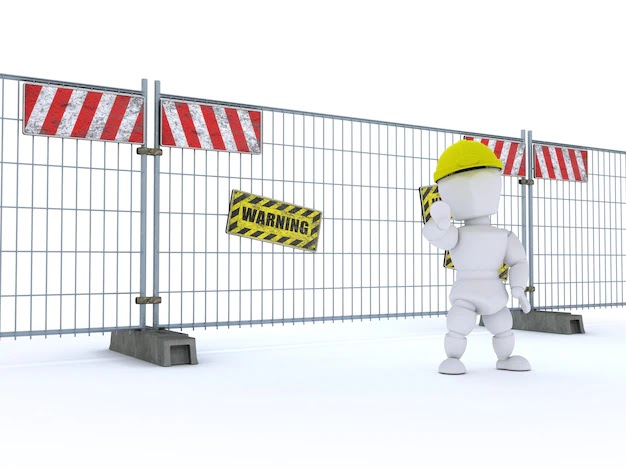
Campsite Safety
I. Choosing a Safe Campsite
1. Location, Location, Location
The first step to campsite safety is choosing the right location. Consider the following factors when selecting your campsite:
- Avoid Low-Lying Areas: Set up camp on higher ground to avoid flooding during rain. Low-lying areas can become waterlogged quickly, leading to soggy conditions and potential water damage to your gear.
- Check for Hazards: Look for potential hazards like dead trees or branches that could fall, uneven ground that could cause tripping, and proximity to wildlife trails. Avoid setting up camp near cliffs, unstable slopes, or areas prone to rockslides.
- Proximity to Water: While camping near a water source like a river or lake is convenient for drinking and cooking, be cautious of setting up too close. Water levels can rise unexpectedly, and you want to avoid insect infestations common in damp areas. Choose a spot at least 200 feet away from water sources.
2. Consideration of Weather Conditions
Weather plays a significant role in campsite safety. Always check the weather forecast before your trip and plan accordingly:
- Wind Exposure: Avoid camping on exposed ridges or in open areas where strong winds can blow away tents or cause branches to fall.
- Sun Exposure: If you're camping in hot weather, choose a site with some shade to avoid overheating and sunburn.
- Shelter from Storms: In areas prone to thunderstorms, avoid camping under tall, isolated trees. Instead, look for a natural shelter or a lower area surrounded by smaller trees.
II. Setting Up a Safe Campsite
1. Tent Placement
The placement of your tent is crucial for both comfort and safety:
- Flat Ground: Set up your tent on flat ground to ensure a good night's sleep and reduce the risk of rolling during the night. Clear away rocks, sticks, and other debris that could cause discomfort.
- Stake Securely: Secure your tent with stakes, especially in windy conditions. Ensure that the tent is taut to prevent flapping, which can cause wear and tear.
- Fire Safety: Place your tent at a safe distance from the campfire, preferably upwind, to avoid exposure to smoke and sparks.
2. Campfire Safety
A campfire can be the heart of your campsite, providing warmth, light, and a place to cook. However, it can also be a significant hazard if not managed properly:
- Designated Fire Rings: Use designated fire rings or pits whenever possible to contain the fire and prevent it from spreading.
- Clear the Area: Clear the area around the fire pit of leaves, grass, and other flammable materials to create a safe zone.
- Size Control: Keep the fire small and manageable. Never leave the fire unattended, and always have a bucket of water or a fire extinguisher nearby in case of emergencies.
- Extinguish Properly: When extinguishing the fire, pour water over it, stir the ashes, and pour more water until everything is cool to the touch. Never leave a fire smoldering.
3. Food Storage and Wildlife Safety
Wildlife encounters can be dangerous, especially if animals are attracted to your food:
- Food Storage: Store all food, trash, and scented items (like toiletries) in bear-proof containers or hang them from a tree at least 10 feet off the ground and 4 feet away from the trunk. This practice helps prevent wildlife from entering your campsite.
- Cook Away from Sleeping Area: Cook and eat meals at least 100 feet away from your sleeping area. This reduces the risk of attracting animals to your tent while you sleep.
- Dispose of Waste Properly: Pack out all trash and leftover food. If you’re in a remote area, bury biodegradable waste at least 6 inches deep and 200 feet away from water sources.
III. Staying Safe During Outdoor Activities
1. Hiking and Exploring
Exploring the area around your campsite is one of the joys of camping, but it comes with risks:
- Plan Your Route: Before setting out, plan your hiking route and inform someone in your group about your plans. Stick to marked trails whenever possible.
- Stay Hydrated: Carry plenty of water and drink regularly, even if you don't feel thirsty. Dehydration can occur quickly, especially in hot or dry conditions.
- Use Proper Footwear: Wear sturdy, comfortable shoes or boots with good traction to prevent slips and falls on uneven terrain.
- Check for Wildlife: Be aware of your surroundings and watch for signs of wildlife, such as tracks, scat, or disturbed vegetation. If you encounter wildlife, maintain a safe distance and avoid startling them.
2. Water Safety
If your campsite is near a body of water, follow these guidelines to stay safe:
- Swimming Safety: Never swim alone, and always keep an eye on children near water. Choose swimming areas free of strong currents, underwater hazards, or sudden drop-offs.
- Boating Safety: If boating, always wear a life jacket and follow local regulations. Avoid alcohol consumption while operating a boat.
- Water Purification: If you're using water from a natural source for drinking or cooking, always purify it by boiling, filtering, or using purification tablets to prevent waterborne illnesses.
IV. Preventing Injuries and Managing Emergencies
1. First Aid Essentials
A well-stocked first aid kit is a must-have for any camping trip:
- Basic Supplies: Include bandages, gauze, antiseptic wipes, tweezers, pain relievers, and any personal medications.
- Know Basic First Aid: Familiarize yourself with basic first aid techniques, such as treating cuts, burns, sprains, and insect bites. Knowing how to respond to common injuries can prevent them from becoming serious.
- Emergency Contact Information: Keep a list of emergency contacts, including park rangers, local authorities, and nearby medical facilities.
2. Insect and Wildlife Hazards
Insects and wildlife can pose threats to your safety:
- Insect Repellent: Use insect repellent containing DEET or picaridin to protect against mosquitoes, ticks, and other biting insects. Wear long sleeves and pants to minimize exposure.
- Check for Ticks: After spending time outdoors, check yourself and others for ticks, especially in areas with tall grass or dense vegetation. Remove ticks promptly with tweezers, pulling them out gently but firmly.
- Snake Safety: In areas where venomous snakes are common, be cautious when walking through tall grass, rocky areas, or near water. Wear high boots and avoid putting your hands in places where you can't see.
3. Fire and Burn Injuries
Burns are one of the most common campsite injuries. Here’s how to avoid them:
- Keep a Safe Distance: Always maintain a safe distance from the fire, especially when adding wood or cooking. Use long-handled tools to move or adjust items in the fire.
- Supervise Children: Never allow children to play near the fire. Teach them about fire safety and ensure they understand the dangers.
- Handle Hot Items with Care: Use oven mitts or heavy gloves when handling hot pots, pans, or other cooking items. Be cautious when opening lids, as steam can cause burns.
4. Handling Emergencies
In the event of an emergency, quick thinking and preparedness are key:
- Stay Calm: Staying calm helps you think clearly and make better decisions. Assess the situation and determine the best course of action.
- Call for Help: If you have cell service, call for help immediately. Provide your location, the nature of the emergency, and the condition of any injured persons.
- Administer First Aid: Provide first aid to the best of your ability until help arrives. If someone is seriously injured, avoid moving them unless absolutely necessary to prevent further harm.
V. Leave No Trace: Environmental Safety
1. Practice Responsible Camping
Leaving your campsite as you found it—or better—is essential for preserving the natural environment:
- Pack Out Trash: Take all trash with you when you leave. This includes food scraps, packaging, and other waste. Use biodegradable products whenever possible.
- Respect Wildlife: Do not disturb or feed wildlife. Feeding animals can alter their natural behaviors and put both you and them at risk.
- Minimize Campfire Impact: Use established fire rings or portable stoves instead of creating new fire pits. Scatter any remaining ashes and restore the area to its natural state.
2. Protecting Water Sources
Water sources are vital to the ecosystem and should be protected:
- Avoid Contamination: Never wash dishes, bathe, or dispose of waste directly in rivers, lakes, or streams. Use a container to collect water and do your washing at least 200 feet away from the water source.
- Use Biodegradable Soap: If you must use soap, choose biodegradable options and use them sparingly. Even biodegradable soap can harm aquatic life, so it’s best to minimize its use.
3. Respecting Other Campers
Campsites are often shared spaces, so be mindful of others:
- Keep Noise to a Minimum: Respect quiet hours and keep noise levels low, especially at night. This ensures everyone can enjoy the peace and tranquility of nature.
- Share Common Areas: If your campsite has shared facilities like picnic tables or fire pits, use them considerately and clean up after yourself.

Conclusion
Campsite safety is about more than just avoiding accidents; it’s about being prepared, respectful, and mindful of the environment and others around you. By following these guidelines, you can enjoy a camping trip that’s not only safe but also enriching and enjoyable. Whether you’re venturing into the backcountry or staying at a developed campground, these tips will help ensure that your outdoor adventure is memorable for all the right reasons. Happy camping!
FAQ
Ques 1: What should I look for when choosing a safe campsite location?
Ans: When selecting a campsite, choose a location on higher ground to avoid flooding. Look for a flat area free from potential hazards like dead trees, loose rocks, or uneven terrain. Avoid setting up near water sources, cliffs, or unstable slopes. Also, consider the weather conditions—avoid areas prone to strong winds, and choose spots with some shade in hot weather.
Ques 2: How can I safely store food to avoid attracting wildlife?
Ans: To prevent attracting wildlife, store all food, trash, and scented items in bear-proof containers or hang them from a tree, at least 10 feet off the ground and 4 feet away from the trunk. Cook and eat meals at least 100 feet away from your sleeping area, and pack out all trash and leftover food. Never store food inside your tent.
Ques 3: What should I include in a camping first aid kit?
Ans: A camping first aid kit should include bandages, gauze, antiseptic wipes, tweezers, pain relievers, and any personal medications. You should also include items for treating common camping injuries, such as burn ointment, a snakebite kit, and insect repellent. Additionally, a guide to basic first aid can be helpful in emergencies.
Ques 4: How do I prevent and treat insect bites while camping?
Ans: Prevent insect bites by using insect repellent containing DEET or picaridin, wearing long sleeves and pants, and avoiding scented lotions and perfumes that attract insects. After spending time outdoors, check yourself for ticks and remove them promptly. If bitten, clean the area with soap and water, apply an antiseptic, and use hydrocortisone cream to reduce itching and swelling.
Ques 5: What are the key steps to ensure fire safety at a campsite?
Ans: To ensure fire safety, use designated fire rings or pits whenever possible. Clear the area around the fire pit of flammable materials and keep the fire small and manageable. Never leave the fire unattended, and always have water or a fire extinguisher nearby. When extinguishing the fire, pour water over it, stir the ashes, and ensure everything is cool to the touch before leaving the area.







Do Leave Your Comment